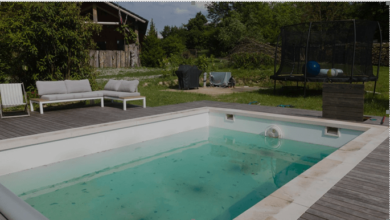How to Choose the Best Pool Cleaner for Your In-Ground or Above-Ground Pool

A sparkling clean pool enhances every swim, and selecting the best pool cleaner for your in-ground or above-ground pool in 2025 can simplify maintenance while keeping your pool pristine. With a variety of pool cleaners available—robotic, suction, pressure-side, and hybrid—choosing the right one requires understanding your pool’s unique needs, budget, and preferences. This comprehensive guide explores the key factors to consider, from pool type and debris challenges to advanced features, helping you find the best pool cleaner for your setup without overwhelming you with options.
Why a Pool Cleaner Is Essential
A high-quality pool cleaner automates debris removal, saving time and reducing the need for manual scrubbing. By keeping dirt, algae, leaves, and other debris at bay, pool cleaners maintain water clarity, prevent algae buildup, and reduce strain on your pool’s filtration system. Whether you have an in-ground pool with complex features or a simple above-ground setup, the right cleaner enhances your pool’s health and your enjoyment. Below, we outline the steps to choose the best pool cleaner for your in-ground or above-ground pool, covering types, features, and practical tips.
Understanding Pool Cleaner Types
Each type of pool cleaner offers distinct advantages tailored to specific pool types and maintenance needs. Here’s a breakdown of the main options:
Robotic Pool Cleaners
- How They Work: Powered by electricity, robotic cleaners operate independently with built-in motors and filters. They use smart navigation to clean floors, walls, and sometimes waterlines.
- Key Features: Advanced sensors, programmable schedules, wall-climbing, energy-efficient designs.
- Best For: In-ground pools with irregular shapes or owners seeking hands-off cleaning.
- Pros: Energy-efficient, versatile for various surfaces (vinyl, fiberglass, concrete), thorough cleaning for fine debris.
- Cons: Higher upfront cost, requires occasional filter cleaning.
Cordless Robotic Cleaners
- How They Work: Battery-powered robotic cleaners eliminate cords, offering flexibility for smaller pools.
- Key Features: Lightweight, multiple cleaning modes, cordless operation.
- Best For: Above-ground pools or small in-ground pools with simple layouts.
- Pros: Easy to handle, no pump dependency, ideal for compact setups.
- Cons: Limited battery life (typically 60–90 minutes), less effective for large pools.
Suction-Side Pool Cleaners
- How They Work: Connected to the pool’s skimmer or suction line, these cleaners use the pump’s suction to move and collect debris into the pool’s filter.
- Key Features: Simple design, affordable, lightweight.
- Best For: Above-ground or small in-ground pools with standard shapes.
- Pros: Budget-friendly, low maintenance, effective for fine debris like sand.
- Cons: Relies on pool pump, may clog with large debris, semi-random navigation.
Pressure-Side Pool Cleaners
- How They Work: Powered by water pressure from a booster pump or return line, these cleaners collect debris in a dedicated bag.
- Key Features: Large debris bags, strong suction for leaves and twigs.
- Best For: In-ground pools in debris-heavy areas (e.g., near trees).
- Pros: Handles large debris well, reduces filter strain, durable.
- Cons: Requires booster pump, higher energy use, less effective for fine debris.
Key Factors to Consider
To choose the best pool cleaner, evaluate these factors based on your pool’s characteristics and your maintenance goals:
Pool Type and Size:
In-Ground Pools: Often larger or irregularly shaped, these benefit from robotic cleaners with smart navigation or pressure-side cleaners for heavy debris.
Above-Ground Pools: Typically smaller and simpler, these pair well with cordless robotic or suction-side cleaners for cost-effective cleaning.
Size: Larger pools need cleaners with longer run times or stronger navigation, while smaller pools can use compact models.
Pool Surface Material:
Ensure the cleaner is compatible with your pool’s surface (vinyl, fiberglass, concrete, tile) to prevent damage. For example, some cleaners have soft brushes for vinyl, while others are designed for rougher surfaces like concrete.
Debris Type:
Fine Debris (Sand, Algae): Robotic or suction-side cleaners excel at capturing small particles.
Large Debris (Leaves, Twigs): Pressure-side cleaners with large debris bags or robotic models with specialized attachments are ideal.
Budget:
Upfront Cost: Robotic cleaners range from $500–$1500, suction-side from $100–$500, and pressure-side from $300–$800.
Long-Term Savings: Robotic cleaners save on energy by not relying on the pool pump, while suction-side models may increase pump wear.
Ease of Use:
Look for features like app-based controls, easy-to-clean filters, or auto-parking for convenience.
Cordless models simplify setup, while suction-side cleaners require minimal onboard maintenance.
Energy Efficiency:
Robotic cleaners use low-voltage power, reducing electricity costs.
Suction and pressure-side cleaners rely on the pool pump, which may increase energy use.
Step-by-Step Guide to Choosing Your Pool Cleaner
Follow these steps to select the best pool cleaner for your in-ground or above-ground pool:
Assess Your Pool:
- Measure your pool’s dimensions and note its shape (rectangular, freeform) and surface material.
- Identify the primary debris type (e.g., fine dirt, heavy leaves) and frequency of cleaning needed.
Determine Your Budget:
- Decide on your spending limit, factoring in both purchase price and ongoing costs like energy or maintenance.
- Consider long-term savings from energy-efficient models like robotic cleaners.
Match Cleaner to Pool Type:
- In-Ground: Choose robotic cleaners for complex shapes or pressure-side for debris-heavy pools.
- Above-Ground: Opt for suction-side or cordless robotic cleaners for simplicity and affordability.
Verify Compatibility:
- Confirm the cleaner suits your pool’s surface and filtration system. For example, suction-side cleaners need a strong pump, while robotic cleaners are system-independent.
Prioritize Features:
- Decide which features matter most: automation for busy schedules, large debris capacity for tree-heavy areas, or affordability for simple setups.
Read User Reviews:
- Check feedback from pool owners with similar pool types to ensure reliability and performance.
Benefits of the Right Pool Cleaner
Investing in the best pool cleaner offers significant advantages:
- Time Savings: Automated cleaning reduces manual effort, freeing up time for swimming or relaxation.
- Cost Efficiency: Energy-efficient models lower utility bills, and proper cleaning extends the life of pool equipment.
- Improved Pool Health: Regular debris removal prevents algae, maintains water clarity, and reduces chemical use.
- Customized Performance: Tailored features ensure optimal cleaning for your pool’s unique needs.
Common Mistakes to Avoid
- Choosing the Wrong Type: Using a suction-side cleaner for heavy debris or a robotic cleaner for an incompatible surface can lead to poor performance.
- Ignoring Maintenance Needs: Neglecting filter or bag cleaning reduces efficiency and lifespan.
- Focusing Only on Price: Low-cost models may lack durability or features, increasing long-term costs.
- Overlooking Pool System: Ensure your pump or filtration system supports suction or pressure-side cleaners.
Maintenance Tips for Longevity
- Clean Filters Regularly: Rinse robotic or pressure-side cleaner filters/bags after each use to maintain suction power.
- Inspect Components: Check brushes, wheels, or hoses for wear and replace as needed.
- Store Properly: Keep cleaners in a dry, shaded area to prevent damage from sun or moisture.
- Monitor Performance: Address issues like reduced suction or erratic navigation promptly to avoid costly repairs.
Final Thoughts
Choosing the best pool cleaner for your in-ground or above-ground pool in 2025 is about aligning the cleaner’s capabilities with your pool’s size, surface, debris type, and budget. Robotic cleaners offer advanced automation for in-ground pools, while suction-side and cordless models provide affordability for above-ground setups. Pressure-side cleaners tackle heavy debris, ideal for challenging environments. By evaluating your needs, comparing features, and avoiding common pitfalls, you can select a pool cleaner that keeps your pool sparkling with minimal effort. Start your search today to enjoy a cleaner, more inviting pool all season long.







